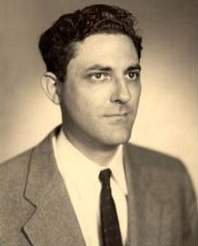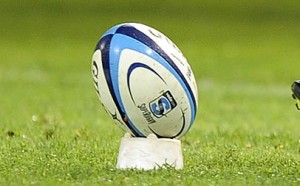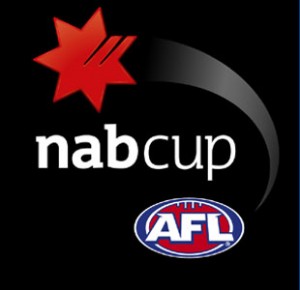 Recently one of my potential clients pointed out a website that claims to debunk the Kelly criterion. For those that don’t know the Kelly criterion is a money management strategy that works out how much you should bet on a sports outcome based on the probability of the team winning, the odds that the team are at and your bank size.
Recently one of my potential clients pointed out a website that claims to debunk the Kelly criterion. For those that don’t know the Kelly criterion is a money management strategy that works out how much you should bet on a sports outcome based on the probability of the team winning, the odds that the team are at and your bank size.
It is not the first time I’ve noticed the article on http://professionalgambler.com/debunking.html as the article has been up there for quite a while. Several years ago another of my friends said it was “embarrassing for the bloke” that the article was still there. But considering that I highly use the criterion in my betting, I hate to have potential clients find articles that criticise the method that I use. Well, they have every right to criticise me, but when they get it completely wrong, that’s where I come in.
So this is my article, debunking the debunking of the Kelly criterion
PG, for short, suggest that we get a couple of decks of cards and do a test. That’s so old school. I’ll do the same thing with a statistical simulation. Using exactly his test, but I might do it say, 50,000 times instead. Computer programming is handy you know.
And guess what? The results actually favour PG’s argument. When betting with the Kelly criterion the average bank size after 100 bets was $49,320.70, up quite a bit from the original $10,000. When working out how much each bet was using the average size bet of the Kelly criterion, the average finishing bank size over 50,000 simulations was $53,763.75. In fact 65.7% of the results favoured PG’s flat betting strategy.
So perhaps PG is correct, we should all be flat betting no matter what? Not so. You see PG decided in his article to compare the average size of all the Kelly bets and bet the same amount flat betting. That sounds all very good, but in reality you have no idea what your average bet size is several years into the future.
To show why this method doesn’t work, I will do another simulation where instead of just betting 100 bets (which one could easily do in a day or two), but with 1000 bets.
The results are incredible and obviously not realistic, but they are there to prove a point. The average finishing bank using the Kelly criterion was just over $100 Billion, whilst the average flat betting strategy was just over $1,000 Billion, or 10 times the size.
Seems like the flat betting wins again yes? No. Because the average size bet for flat betting was $288 Million, which considering that you only have a $10,000 bank is pretty impressive.
The comparison is assuming that even with a $10,000 bank, that you are going to bet $288 Million each bet, and if you lose your original $10,000 (which you could do on the very first bet), you just keep going betting $288 Million at a time.
Quite clearly, the comparison is not legitimate.
You see PG doesn’t seem to understand what exactly the Kelly Criterion is. The Kelly criterion suggests that you bet more when the probability is greater, you bet more when your advantage over the bookmaker is greater, and you bet more when you bank size is greater.
He incorrectly labels this a progressive betting technique when it is far from it. Lets look at each criteria in the Kelly betting system.
You bet more when the probability is greater. If something was a 99% chance to win, you surely would bet more than if something was a 1% chance to win. Id hate to be risking 5% of my bankroll on a 200/1 shot. PG probably has never thought of this in this case, because like a lot of Americans, he only bets on the line where something is around a 50-60% chance to win each time.
You bet more when your advantage over the bookie is greater. Surely if you rated a team a 90% chance to win and they were paying $2.00, wouldn’t you bet more than if you rated a team a 50% chance to win and they were paying 2.01?
It seems that the only thing that PG doesn’t like about the Kelly criterion is the fact that as your bank grows larger (or smaller) then you bet more (or less). Incorrectly calling this a progressive betting system, the reason why one should adjust their bet size based on their bank size is given by a few examples.
Remember when you were young child and you would save all week to go down to the corner shop and buy a $1 bag of mixed sweets? Would you do the same now? Save all week to buy some sweets? Of course not, now that you are more wealthy, you spend more. You could save all week to buy a TV or a dining room table that would cost you $1,000, and if you did, here you have spent a percentage of what you are worth.
When I first started betting, I put $100 into a bookmaker and bet $10 a time. As I realised my edge was significant, and my bank kept increasing, I increased by bet size. Imagine me now betting $10 a bet. What would be the point? Some might say that of course you change your bet amount at the end of the season or after each month, but isn’t that just adjusting your bet size to your bank? Why not do it after every bet?
The truth is, to accurately compare the Kelly Criterion to flat betting one has to keep constant the percentage of the bank that one bets. With PG’s card game example, the average bet size using the Kelly criteria based on odds of 1.95 is 14.47%. So lets do the simulation example, comparing how the Kelly Criterion went compared to flat betting with each bet at $1,447 (14.47% * $10,000).
Whilst the average Kelly bet bank $49,320.70 over the 50,000 simulations, the average bet size when flat betting was only $29,623.16. That’s a $39,000 profit compared to $19,000 profit – Less than half the profit. In fact Kelly betting had a greater profit 32% of the time.
But what happens if we compare with say, 1000 bets like previously? Kelly betting finished, as previously, with an average bank size of just over $100 Billion, whilst flat betting finished with an average bank size of $205,966.82. That’s 500,000 times smaller. Ouch!
In fact flat betting only had a higher bank than Kelly betting 0.6% of the time.
PG finally digs himself a hole by stating that it is “futile” to try to estimate the probability of a team winning because there are so many “countless variables involved” and hence “you can never know what your winning expectation might be”
Quite clearly, PG is from the old school of professional gambling. One who hasn’t woken up to the power of mathematics. I wish J. R. Miller all the best of luck of course, but in the mean time, consider his article on debunking the Kelly System, debunked.










 With over ten years of live betting history on the net, and large profits almost every year, the Sportpunter AFL model is the best anywhere to be seen. More than 10% ROI had been made and is on sale now at the
With over ten years of live betting history on the net, and large profits almost every year, the Sportpunter AFL model is the best anywhere to be seen. More than 10% ROI had been made and is on sale now at the  Sportpunter's tennis model has been one of the longest running. Operating since 2003 it has made around 5% ROI over the years. And with many matches being played, it is a model that tennis betting enthusiasts need behind them.
Sportpunter's tennis model has been one of the longest running. Operating since 2003 it has made around 5% ROI over the years. And with many matches being played, it is a model that tennis betting enthusiasts need behind them.